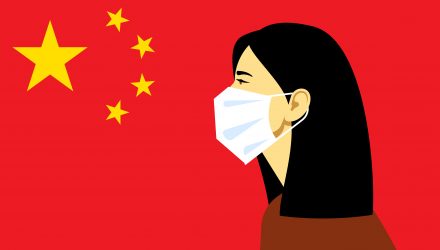The World Health Organization has declared China’s coronavirus a global health emergency, but the equity markets and stock exchange traded funds may weather the storm.
According to FlexShares research, in the majority of cases, a global health crisis has been a non-event for the global equity markets, with markets showing a positive return throughout the full 9 month period in 6 of the 8 instances. Furthermore, over half of the instances, markets were positive in both the 3 months leading up to and the 6 months after the crisis.
Many have drawn comparisons from today’s coronavirus to the 2002-2003 SARS, which is a closely related cousin to the current outbreak in Wuhan, China. Based on current numbers, it appears the virus this time around is less deadly but more contagious.
Looking ahead, FlexShares believed that this time could be different or worse as it relates to the economic and financial markets. Specifically, the analysts pointed out that this virus is less deadly but will spread more easily and have a longer incubation period. The use of social media has increased news circulation but impaired short-term economic activity as people focus on fear. China, the epicenter of the outbreak, is also the second largest global economy and a big part of the world economic engine.
“While financial markets have steadied, we are certainly not out of the woods on the coronavirus – and we will be tracking further developments – but, for now, market reaction can be classified as relatively calm,” FlexShares added.
As we face increased unknowns and a potentially volatile market response, investors may turn to quality and low-volatility ETF strategies to hedge risks and still maintain upside potential, such as the FlexShares US Quality Low Volatility Index Fund (NYSE: QLV), FlexShares Developed Markets ex-US Quality Low Volatility Index Fund (NYSE: QLVD) and FlexShares Emerging Markets Quality Low Volatility Index Fund (NYSE: QLVE).
The three ETFs utilize a quality screen to provide exposure to high-quality companies with lower absolute risk, thereby limiting potential future volatility. The quality screen analyzes a broad universe of equities based on key indicators such as profitability, management efficiency, and cash flow, and then excludes the bottom 20% of stocks with the lowest quality score. The index is then subject to regional, sector and risk-factor constraints, in order to manage unintended style factor exposures, significant sector concentration, and high turnover.
Investors should keep an eye on company stocks that exhibit low-volatility traits in today’s markets. Equities still serve a purpose in a diversified investment portfolio, global yields are still depressed and the shifting demographics with a growing group of working millennials could further drive demand for stocks.
Additionally, quality should not be conflated with low volatility, but there are times when quality stocks display low volatility traits. That was the case during the fourth quarter of last year’s market swoon, indicating that the quality factor can provide some protection during times of elevated market stress.

